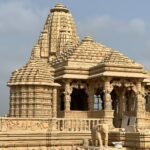Chandragupta Maurya was an influential figure in ancient Indian history who established the Maurya Empire. Born around 340 BCE, he played a crucial role in shaping the political landscape of India.
Chandragupta Maurya’s rise to power began when he became a disciple of the renowned philosopher Chanakya, also known as Kautilya or Vishnu Gupta. With Chanakya’s guidance, he organized a rebellion against the Nanda dynasty, which ruled the Magadha region at that time.
After successfully overthrowing the Nanda dynasty, Chandragupta Maurya established the Maurya Empire in 322 BCE, with its capital at Pataliputra (present-day Patna, Bihar). The empire expanded rapidly under his reign and eventually encompassed almost the entire Indian subcontinent.
Chandragupta Maurya’s empire thrived economically, facilitated by an efficient administrative system and a well-structured bureaucracy. He implemented policies to ensure fair governance, established trade relations with foreign powers, and developed a network of roads for improved connectivity.
One notable aspect of Chandragupta Maurya’s reign was his confrontation with the Greek general Seleucus I Nicator. The conflict ended with a peace treaty, which allowed Chandragupta Maurya to acquire territories in the northwestern part of the subcontinent, including parts of present-day Afghanistan and Pakistan.
Later in his life, Chandragupta Maurya renounced his throne and embraced Jainism, a non-violent religious tradition. He is said to have undertaken a journey to the south, where he fasted until his death.
Chandragupta Maurya’s legacy lies in his establishment of a centralized empire and his administrative reforms, which served as a foundation for future Indian empires. His dynasty endured for several generations, with his grandson Ashoka becoming one of the most renowned rulers in Indian history.
The life and achievements of Chandragupta Maurya continue to be studied and celebrated, highlighting his significant contribution to ancient Indian history and his impact on the region’s political and social landscape.











